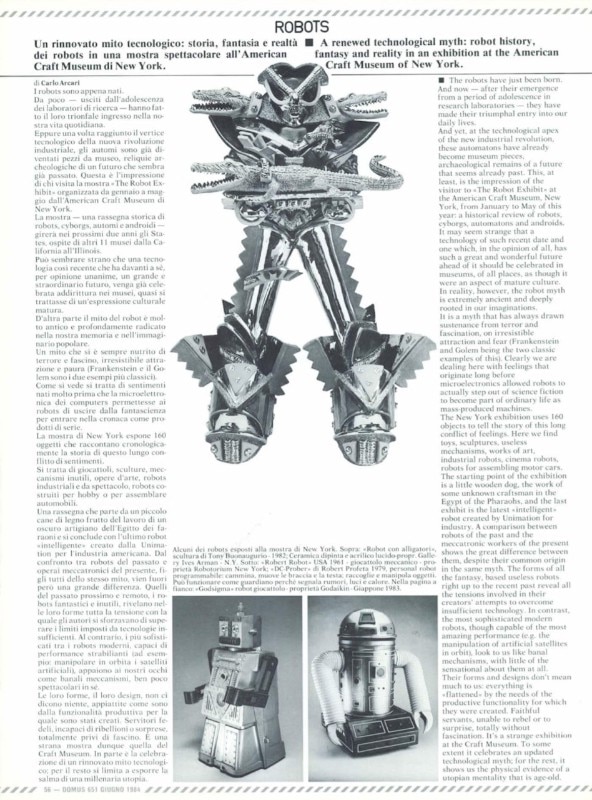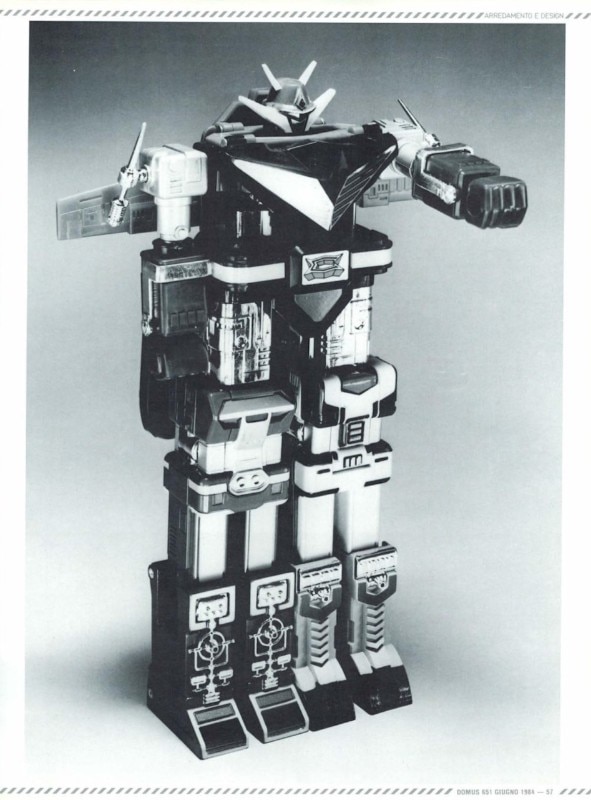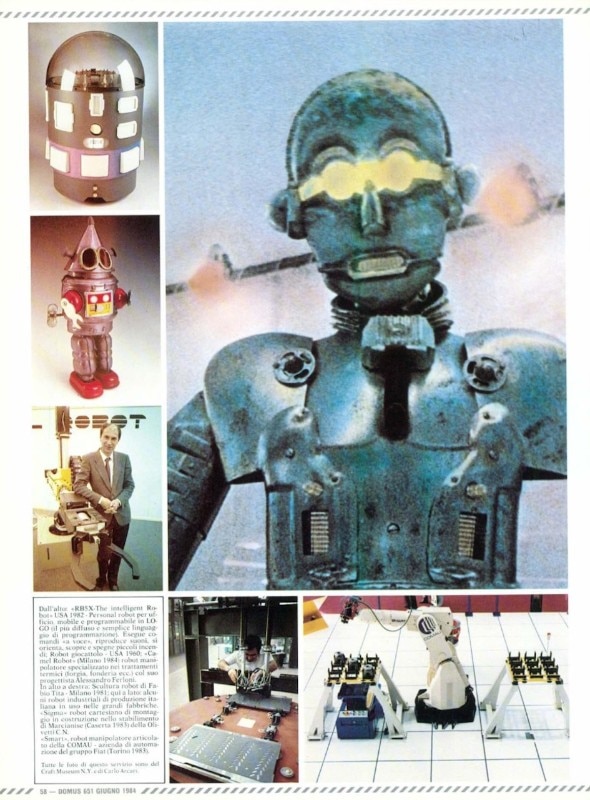Not an easy time to be a robot, the early 1980s. By then moving from the imaginary – the humanoids of Isaac Asimov, or the great warrior entities of Japanese anime such as Mazinga and Ufo Robot Goldrake – to the dimension of experimentation, of the laboratory, in the years immediately following the androids of Star Wars, robots were making their entry into reality, not without concern on the part of the society that would welcome them. Servants, substitutes, living, inert, dangerous? Most importantly, what or who were robots? Questions that might have sounded almost naïve in many subsequent exhibitions such as the 2017 one at Vitra, but in 1984 were being investigated through history, in a New York exhibition that Alessandro Mendini's Domus explored in June of that year, on issue 651.

Robots
The robots have just been born. And now — after their emergence from a period of adolescence in research laboratories — they have made their triumphal entry into our daily lives.
And yet, at the technological apex of the new industrial revolution, these automatons have already become museum pieces, archaeological remains of a future that seems already past. This, at least, is the impression of the visitor to «The Robot Exhibit» at the American Craft Museum, New York, from January to May of this year: a historical review of robots, cyborgs, automatons and androids. It may seem st range that a technology of such recent dale and one which, in the opinion of all, has such a great and wonderful future ahead of it should be celebrated in museums, of all places, as though it were an aspect of mature culture. In reality, however, the robot myth is extremely ancient and deeply rooted in our imaginations.

It is a myth that has always drawn sustenance from terror and fascination, on irresistible attraction and fear (Frankenstein and Golem being the two classic examples of this). Clearly we are dealing here with feelings that originate long before microelectronics allowed robots to actually step out of science fiction to become part of ordinary life as mass-produced machines.
The New York exhibition uses 160 objects to tell the story of this long conflict of feelings. Here we find toys, sculptures, useless mechanisms, works of art, industrial robots, cinema robots, robots for assembling motor cars.

The starting point of the exhibition is a little wooden dog, the work of some unknown craftsman in the Egypt of the Pharaohs, and the last exhibit is the latest «intelligent» robot created by Unimation for industry. A comparison between robots of the past and the meccatronic workers of the present shows the great difference between them, despite their common origin in the same myth. The forms of all the fantasy, based useless robots right up to the recent past reveal all the tensions involved in their creators' attempts to overcome insufficient technology. In contrast, the most sophisticated modern robots, though capable of the most amazing performance (e.g. the manipulation of artificial satellites in orbit), look to us like banal mechanisms, with little of the sensational about them at all.
Their forms and designs don't mean much to us: everything is «flattened» by the needs of the productive functionality lor which they were created. Faithful servants, unable to rebel or to surprise, totally without fascination. It's a strange exhibition at the Craft Museum. To some extent it celebrates an updated technological myth; for the rest, il shows us the physical evidence of a Utopian mentality that is age-old.


